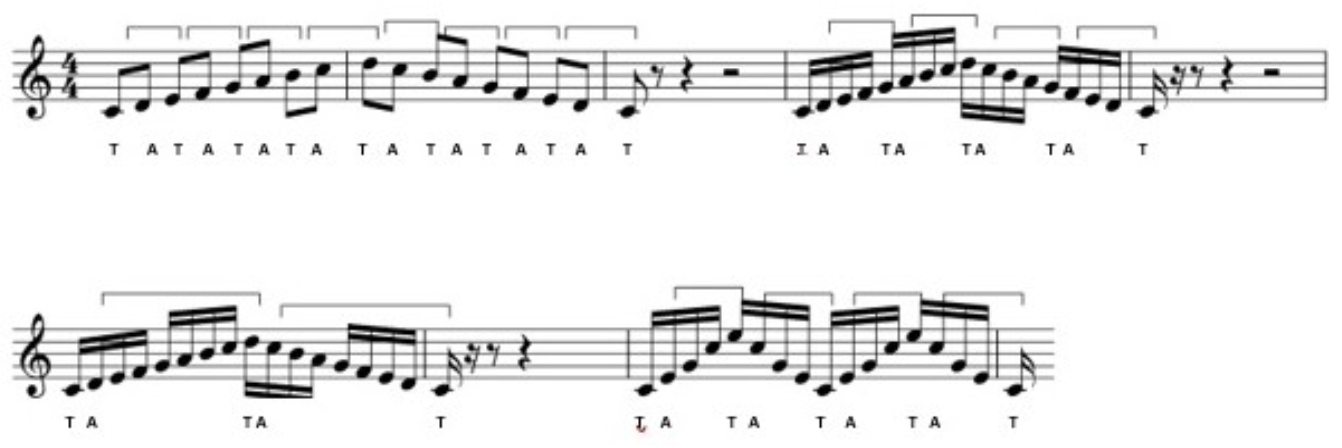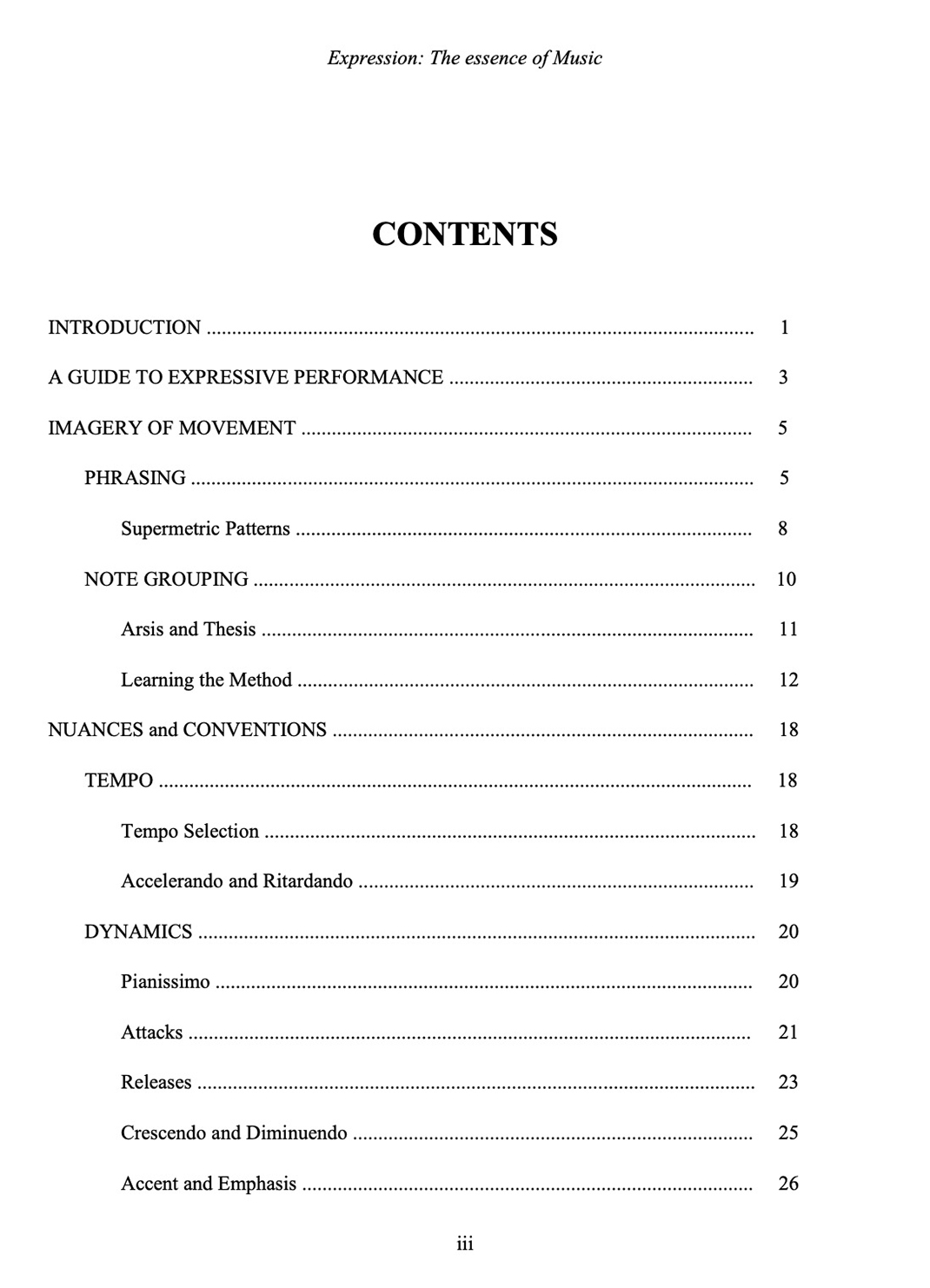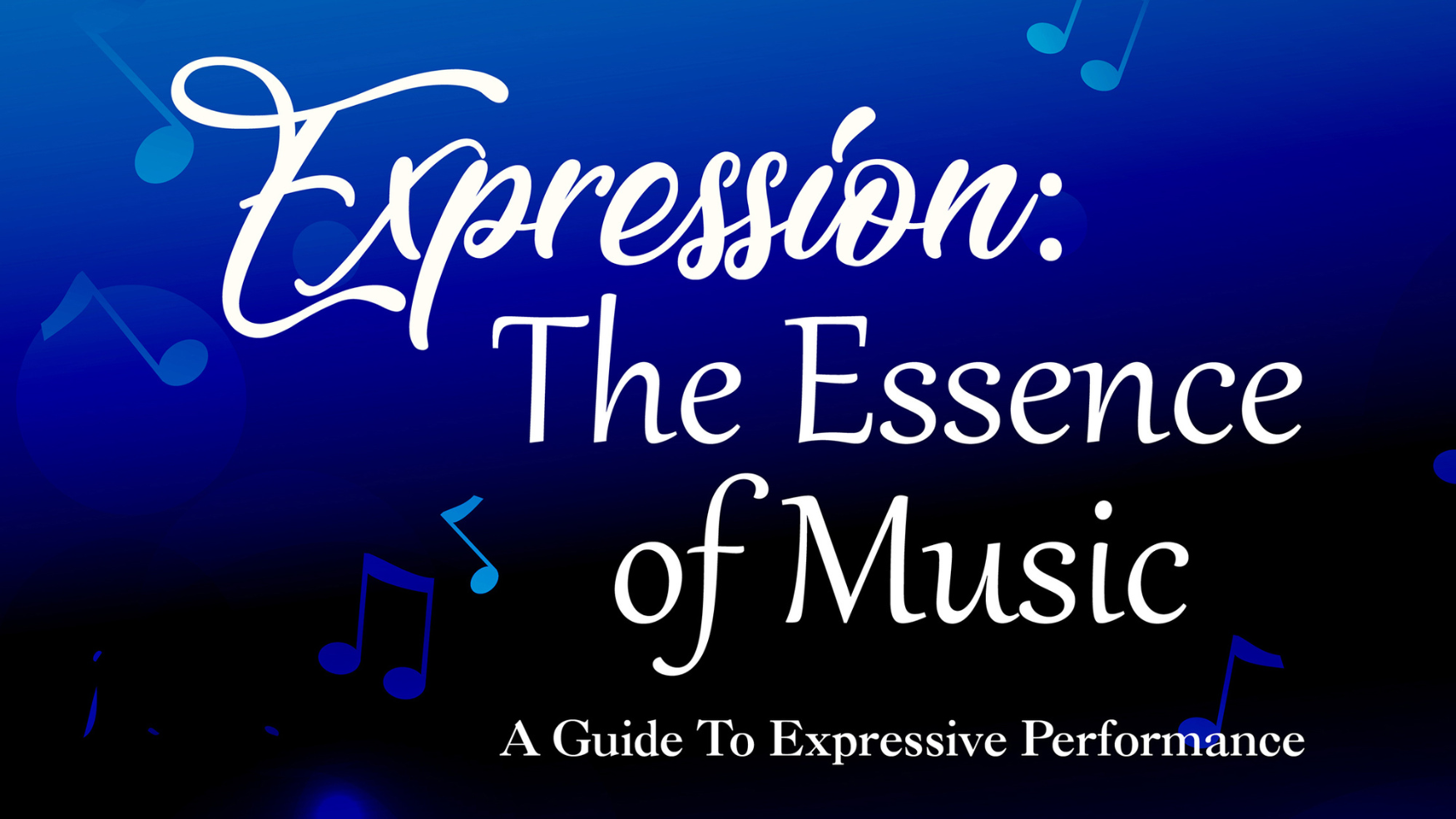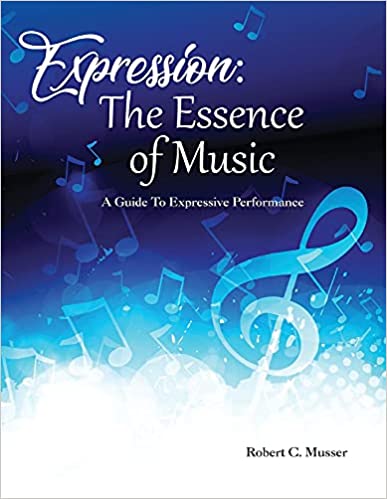A Guide To Expressive Performance
Do you play, sing, or conduct expressively? Does your band, orchestra, or choir play/sing musically? What about your students? Are your/their performances inspiring, sensitive, and musical? Too many musicians and ensembles, at all levels, lack the qualities of sensitivity, warmth, and life in their playing so necessary to be expressive.
Impressive technique is not enough; there must be something more—movement, warmth, expression, sensitivity, feeling. This manual is intended for musicians, conductors, teachers, and students, at any level, who may benefit from suggestions as to how they or their ensembles or their students can perform with more musicality and expressiveness. Until performers (or ensembles) can extend to their listeners a part of themselves through expressive playing, singing, or conducting, they are merely technicians or mechanics going through the motions of playing what is on the page. It’s not just what you play; it’s also what you say.
Some believe you cannot teach musical expression, that this part of music performance is a gift that is the property of only a few exceptional artists, and you either have it or you don’t. Well, to a degree, this may be the case at the very highest level of artistry.
Still, I maintain that by musical phrasing (note grouping) and employing all the nuances and conventions of expressive performance (musicality) that are presented here, any performer/conductor/ensemble can render a more expressive performance, even those that do not have that innate ability to be creative and expressive.
Musicality and expressiveness are a result of how the performer (ensemble or soloist) interprets and employs the elements of tempo, dynamics, and duration. The composer gives us the notes and rhythms and some suggestions as to tempo and dynamics and, occasionally, note duration. It is the interpretation and the addition of these elements (tempo, dynamics, duration) that is the domain of the performer and will make the performance musical and expressive.
Any performance (band, orchestra, choir, ensemble, or soloist) will be made more musical with the tasteful, controlled use of:
- Pianissimo (subtle emphasis, dynamic variation)
- Attacks and Releases (artistic, stylistic, sensitive)
- Accent and Emphasis (well-placed, subtle)
- Tenuto and Rubato (very expressive nuances)
I will explore the use of these and others in this manual.
Three things a musician or an ensemble must do to make the performance expressive:
- Create the imagery of movement in the mind of the listener. With proper phrasing and note grouping, the performer can create the imagery of movement, giving the performance life and warmth.
- Use all the conventions and subtle nuances of musical performance. The ones most often neglected or performed poorly will be addressed here.
- Be creative and play with feeling. Ultimately the performer’s feelings, emotions, and imagination will guide him/her in the use of these nuances. Some ideas and exercises to develop this creativity will be presented here.
IMAGERY OF MOVEMENT
Music is never static; it must always have motion and move and travel coherently. How to attain this fundamental ingredient of musical performance will be presented here.
NOTE GROUPING (Phrase Grouping)
What makes it expressive? It’s Greek to me!
“The ancient Greeks believed that the goal of all art was beauty, and they classified the arts into two groups (1) architecture, sculpture, painting (2) music, poetry, dance.
Beauty, in group 1, is achieved in a state of repose. Elements were juxtaposed in space and perceived at one particular moment.
Beauty, in group 2, is realized in a state of movement; by a succession of its elements during time. The quality of this movement, or motion, is the basis of the enjoyment we receive from the music.
To be convincingly expressive, the performer must create the imagery of movement (motion) in the mind of the listener by making the music move and travel coherently.” Proper note grouping (sometimes referred to as cross-bar phrasing or phrase grouping) will increase the movement imagery engendered by music in the minds of both the performer and listener.
Arsis and Thesis
The terms arsis and thesis originated in the Greek drama, where to keep the dancers, singers, and instrumentalists together, “the leader marked time with one foot encased in a shoe to which was attached a kind of clapper. The arsis was the lifting of the foot, and the thesis was the fall of the foot” (Harvard Dictionary of Music).
Over time, arsis became the term for that part of the beat (upbeat) that creates energy, the motion-creating factor in the motive or phrase. Arsis creates action (or stress) or movement, while thesis (the downbeat) is the resolve (release) of that energy, the result of that action. The perception of motion is increased if the arsis receives more emphasis than the thesis.
Learning the Method
When first introduced to note grouping, it helps to indicate each group by brackets placed in the music above or below the notes. Think of each group as a separate unit with every initial arsis moving to the following thesis. Then move from the smallest note group to joining two groups and so on until you have the entire phrase and the long line. One must have a mental image of motion in each group as the arsis moves to the thesis.
If the following figures are played as bracketed, the emphasis will be on the upbeat and not the downbeat. These figurations ask a question and resolve nothing unless they move on to the next beat (finishing note). In other words, it takes three notes to distinguish a couplet, four for a triplet, five for a quadruplet, and seven for a sextolet.

Play the previous examples and then scales and arpeggios as below.

In the following familiar excerpt from Holst’s Suite in Eb, sing or play the melody with the accent (emphasis) on the downbeats, as usually heard, and then with emphasis on the upbeats. You will hear the difference and how it gives the line more motion.

Refer now to the melody Amazing Grace. Following the note grouping principles, as explained, you will hear that the second note of every duplet and the second and third notes of the triplet are the notes that should get the emphasis as they are the energizing, motion-creating notes of the melody.

In the manual, the above excerpts are expanded upon with additional explanations and music examples. Here is the complete table of contents for Expression: The Essence of Music:


Purchase the complete Expression: The Essence of Music book at this website: www.expressivemusic.com







